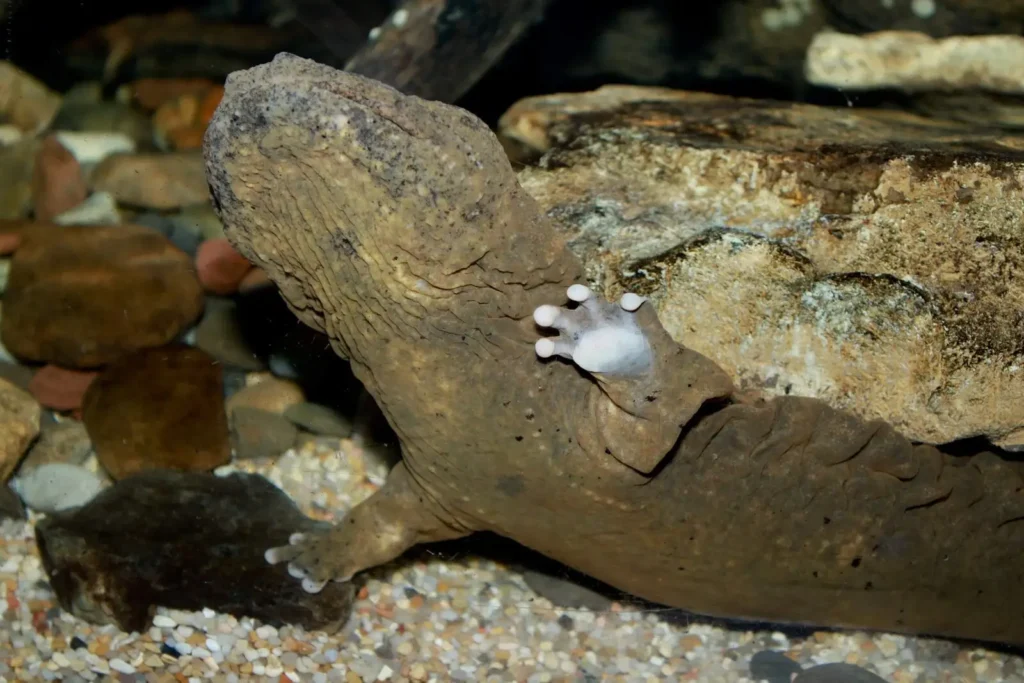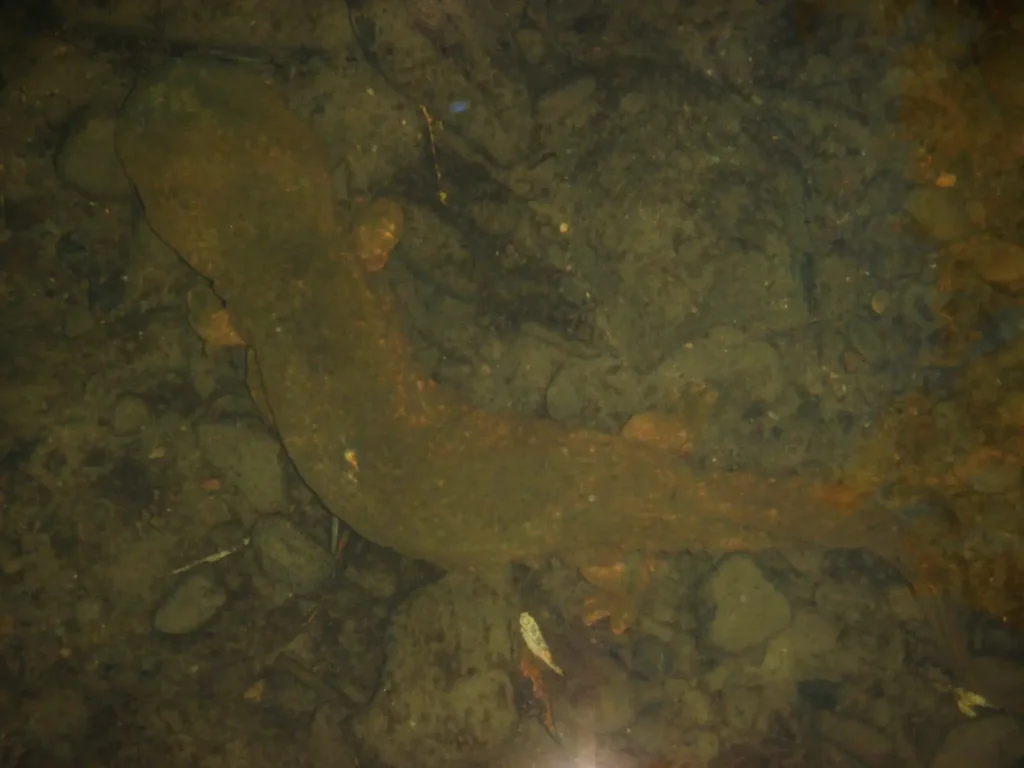Allegheny Creeper (Cryptobranchus alleganiensisIt is the largest salamander in North America and one of the largest amphibians in the world. This a nocturnal aquatic creature, has a unique look and amazing adaptations for survival in fast-moving rivers.
🐉 What is special about this krytosyabrets?
✔ Large size - can reach 75 cm in length
✔ Ability to breathe through the skin - lack of gills in adults
✔ Flattened body - ideal for living in fast-flowing rivers
✔ Ambush Predator - feeds on fish, shellfish, and crustaceans
✔ Lives for more than 30 years
📌 This huge salamander is a true legend in the United States, where it is called the "Hellbender" because of its eerie appearance and powerful strength.

Scientific classification
✔ The Kingdom: Animals (Animalia)
✔ Type: Chordal (Chordata)
✔ Class: Amphibians (Amphibia)
✔ Row: Tailed ones (Caudata)
✔ Family: Kryto-quartz (Cryptobranchidae)
✔ Gender: Kritozyabrtsy (Cryptobranchus)
✔ View: Cryptobranchus alleganiensis
📌 Close relatives of the Allegheny creeper are the Japanese (Andrias japonicus) and Chinese (Andrias davidianus) giant salamanders, which are even larger than it.
Appearance and description
🐲 What does the Allegheny creeper look like?
✔ Length: 50-75 cm (sometimes up to 80 cm)
✔ Weight: 1.5-2.5 kg
✔ Colour: Brown or grayish with dark spots
✔ Broad flattened head with small eyes
✔ Body with sagging skin folds - increase the surface area for breathing
✔ Short legs with strong fingers for securing on rocks
✔ Long, laterally compressed tail for efficient swimming
📌 His wrinkled skin gives him a somewhat ghostly appearance, which is why he is popularly known as the” stone devil “or”infernal flexor".
Distribution area
🌍 Where does Kryptonite live?
✔ Eastern and Central United States
✔ Pennsylvania, Virginia, West Virginia, Ohio, Kentucky, Tennessee, Georgia
✔ Mountain and lowland rivers with clear water
✔ Leaky areas with lots of underwater rocks and shelters
📌 This species does not tolerate water pollution and needs crystal clear water with high oxygen levels.
Lifestyle and behavior
🌙 When is it active?
✔ Nocturnal animal - hunts in the dark
✔ During the day it hides under rocks and tree roots
🏞 Where does he live?
✔ Constantly inhabits the water - does not go on land
✔ Likes cold, clean mountain rivers
📌 This amphibian does not have a swim bladder, so it constantly remains pressed to the bottom so that it does not drift with the current.

Food and hunting
🍽 What does kritosyabrets eat?
✔ Fish
✔ Crustaceans (crabs, crayfish)
✔ Shellfish
✔ Worms, insect larvae
✔ Small amphibians
📌 This giant salamander uses the "ambush" method: it lies motionless and suddenly grabs prey with a wide mouth.
Reproduction and development
💖 How does reproduction occur?
✔ Autumn (September-October) - mating season
✔ Males dig up deep burrows among the stones
✔ Female lays eggs 200-500 eggs to the nest
✔ The male guards the clutch and vents the water with his paws
🔄 Metamorphosis
✔ Larvae hatch in 2-3 months
✔ Up to 2 years old have external gills
✔ After 3-4 years they become adults
📌 Unlike axolotls, Critozoans undergo complete metamorphosis and lose their outer gills.
Life span
⌛ How long does kryptonite live?
✔ In nature - up to 30 years
✔ In captivity-up to 50 years
📌 Due to its low metabolic rate, this salamander can live longer than most other amphibians.
Natural enemies and threats
⚠ What is the threat to Kryto-September?
✔ Water pollution - destroys its habitat
✔ Construction of dams - reduces the level of oxygen in the water
✔ Poaching "because of the rumors about 'magic' properties
📌 Due to the decline in the kryptonite population, it is included in the US Red List.
Interesting facts about the Allegheny Creeper
💡 It is the largest salamander in North America!
💡 It breathes through the skin, not through the lungs!
💡 Able to live more than 50 years in captivity!
💡 The male takes care of the eggs, guarding the clutch!
💡 The only representative of its kind in the Western Hemisphere!
Conclusion
Crete kritozabretz alleghany – an incredible amphibian that combines huge size, a unique way of breathing and a hidden nocturnal lifestyle.
⚠ However, its population is rapidly declining due to water pollution, so it is important to preserve the natural habitat of this rare creature.
🔥 This "hell dragon" is a real treasure of the rivers of North America and one of the most mysterious inhabitants of the water element! 🦎🌍
